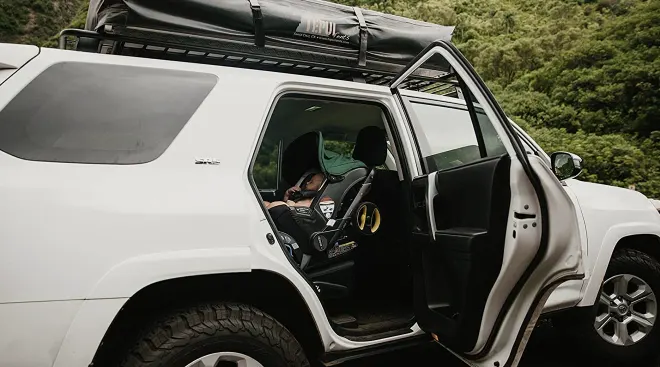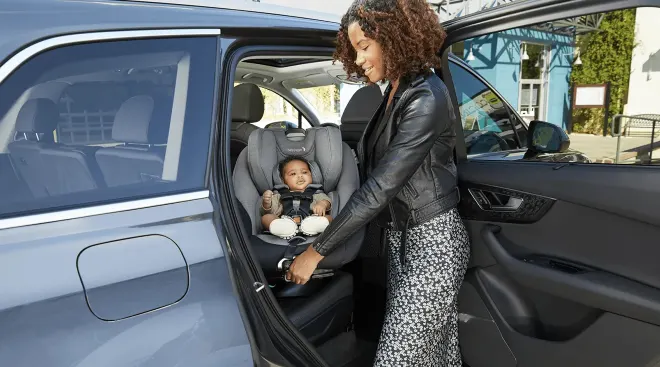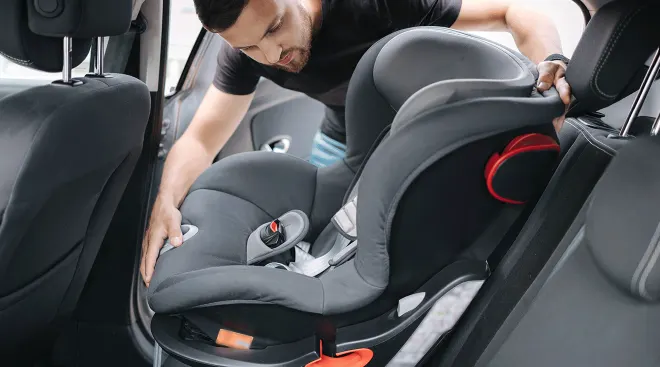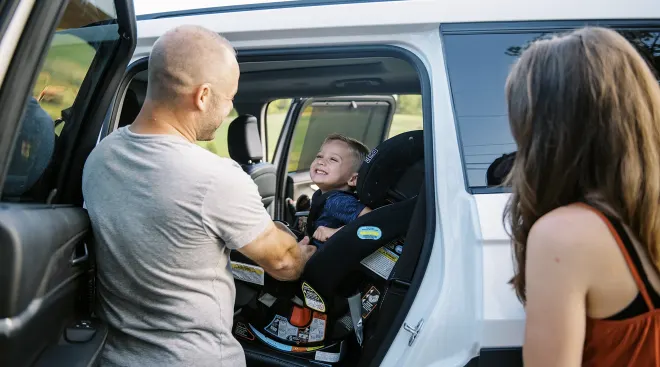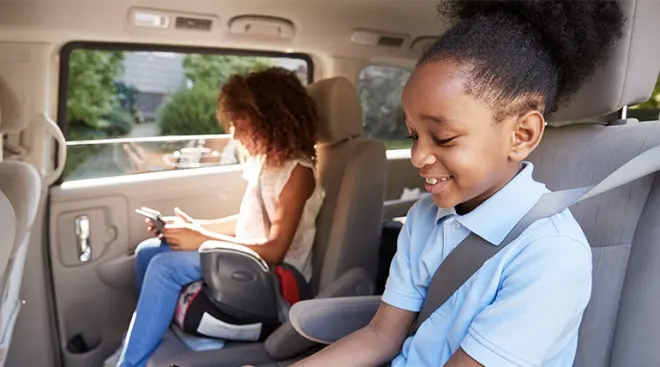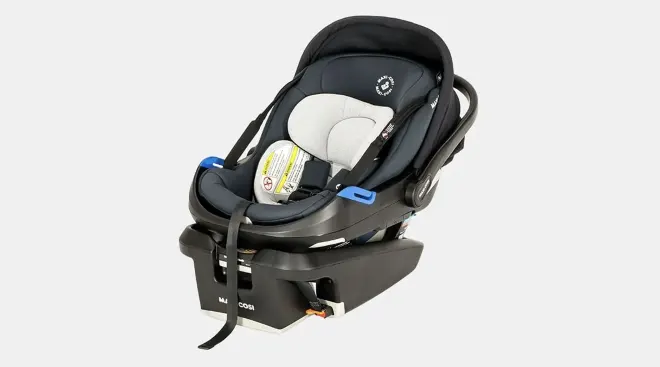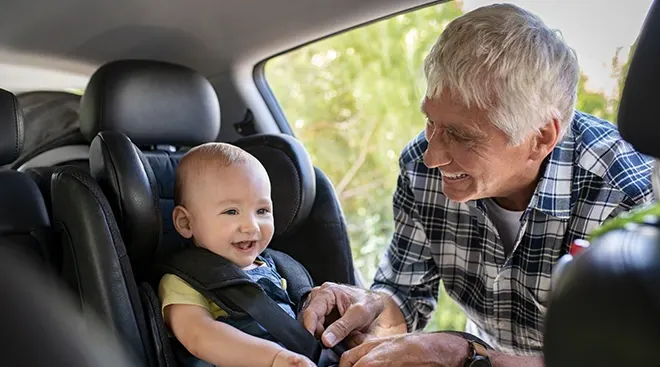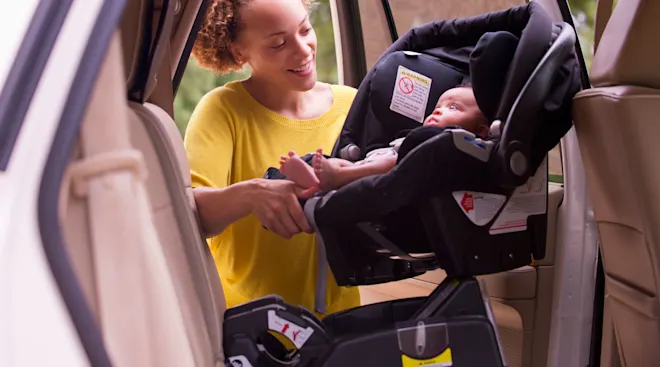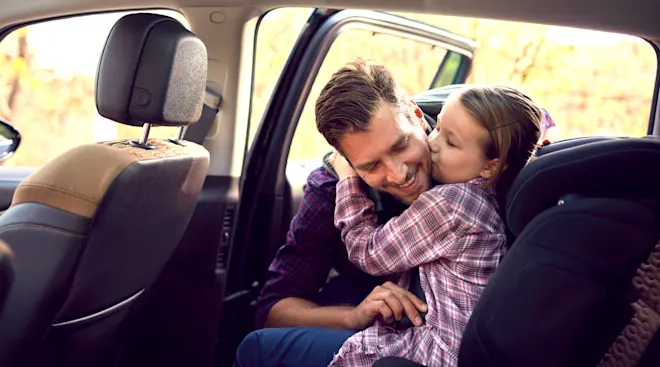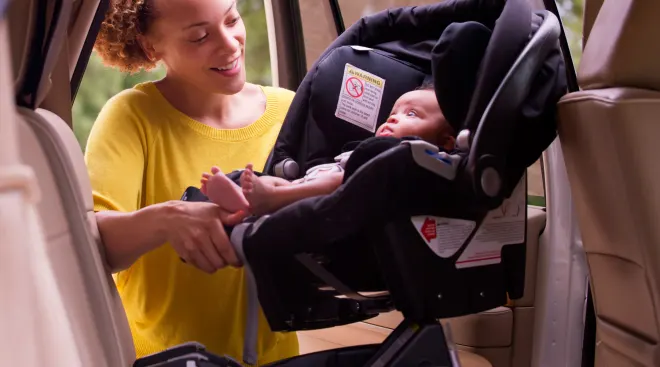Booster Seat Safety 101: When You Need It, When You Don’t
When it was time to get baby the perfect car seat, you were all over it. You understood why it was important to have one, and what could happen without one. But booster seats remain a bit of an enigma for many parents. For instance, did you know that most kids aren’t ready to be out of a booster seat until at least 10 years of age, sometimes even 12? And that seat belt? It should sit on your child’s lap, never the tummy. Confused? You’re not alone—which is why we’re here to explain everything you need to know about booster seat safety.
As your child grows, he’ll graduate to different types of safety restraints, moving from a rear-facing car seat to a forward-facing one, and then on to a booster seat. These types of restraints boost a child’s height so the seat belt fits properly. There are laws in place regarding the safe use of booster seats, but they vary from state to state. Forty-eight states, the District of Columbia and Puerto Rico require kids who have outgrown their car seats—but are still too small to safely use an adult seat belt—to use a booster seat; the only states that don’t are Florida and South Dakota. (Curious to know what your individual state law says exactly? Check out the state-by-state guide on the Governors Highway Safety Association website.)
But across the country, the following is true: “Children should be moved to a booster seat only when they have outgrown the height or weight limit of their forward-facing car seat with a harness,” according to the National Highway Traffic Safety Administration (NHTSA). Car seat limits vary depending on the model, so check your instruction manual to see when your child should start using a booster seat. Even when you make the switch, always be sure to place the booster in the vehicle’s back seat.
Is your kid ready to ride in a booster seat? There are actually different kinds of boosters to choose from. Read on to learn how they differ and what the booster seat requirements are for each.
High back booster seat requirements
As the name implies, a high back booster seat is one with a high back. It also has a headrest. These features are especially important if your car has low seat backs or seats without head restraints, since a child’s head and neck should always be supported. A high back booster seat is more secure. It also allows kids to safely snooze during the ride, thanks to the head support—so if your kid tends to nap in the car, a high back booster is the way to go.
Here’s what the high back booster seat requirements look like:
• High back booster seat weight requirements: Kids can use a high back booster seat whenever they outgrow their car seat, usually when they reach 40 to 65 pounds, until they weigh 120 pounds.
• High back booster seat height requirements: From when kids surpass their car seat limits until they are at least four feet, nine inches tall.
Backless booster seat requirements
While high back booster seats are the more secure of the two, backless booster seats tend to be smaller and lighter, making them easier to travel with. They can also accommodate a greater range of heights and weights, meaning a child can use a backless booster seat for a longer period of time without parents having to buy a new one. But they don’t come with head supports—so if your car doesn’t offer headrests or if the back of the seat isn’t high enough to reach your child’s ears (thereby protecting the bottom of the skull), this isn’t the best type of booster seat for your child.
Here are the general requirements for backless booster seats:
• Backless booster seat age requirements: From the time kids surpass the weight or height limits allowed by their car seat to about 8 to 12 years of age (depending on the child’s size).
• Backless booster seat weight requirements: From the time kids hit the weight max on their car seat to the time the adult seat belt fits them without the aid of a booster. (More on this below.)
• Backless booster seat height requirements: Kids should continue using the booster seat until they’re at least four feet, nine inches, according to AAA.
Kids can stop using a booster seat when—and only when—the car seat belt properly fits them without the help of a booster seat. That usually happens between the ages of 10 and 12, when the child is close to five feet tall or 120 pounds. But every child and every car is different, so make sure your vehicle’s seat belt fits the child in question before ditching that booster seat.
How do you know when a seat belt fits correctly? Ask yourself these questions, courtesy of the NHTSA:
- Is my child tall enough to sit in the vehicle seat without slouching?
- Is my child able to keep his back flat against the vehicle seat?
- Is she able to keep her knees bent at a natural angle over the edge of the seat?
- Are his feet flat on the floor?
- Does the lap belt fit snugly across her upper thighs and not her stomach?
- Does the shoulder belt lie snug across his shoulder and chest and not across his neck or face?
Before you zoom off, check out these important booster seat safety tips so your child can have the safest ride possible.
• Read the booster seat manual. Because every car seat is unique, you have to read the manual to know for sure that you’re strapping your child in correctly.
• Check and adjust the booster seat about every six months. You don’t need to check it every day, but you do need to adjust it as your child grows, so her head and neck is properly supported at all times.
• Make sure the belt lies across the lap, not the tummy. If the belt is across the stomach during a crash, it can dig into the kidneys, liver, uterus and lower spinal cord, leading to potentially devastating injuries.
• Don’t leave an empty booster seat loose in the back seat. Without the child’s weight, the booster can fly right up to the front seat when you least expect it! So store it in the trunk or strap it in.
Published September 2017
Please note: The Bump and the materials and information it contains are not intended to, and do not constitute, medical or other health advice or diagnosis and should not be used as such. You should always consult with a qualified physician or health professional about your specific circumstances.
Navigate forward to interact with the calendar and select a date. Press the question mark key to get the keyboard shortcuts for changing dates.


































